 "VincentMalamute-Kim" (VincentMalamute-Kim)
"VincentMalamute-Kim" (VincentMalamute-Kim)
08/03/2020 at 00:18 ē Filed to: None
 0
0
 25
25
 "VincentMalamute-Kim" (VincentMalamute-Kim)
"VincentMalamute-Kim" (VincentMalamute-Kim)
08/03/2020 at 00:18 ē Filed to: None |  0 0
|  25 25 |
Good looking Class B RV.
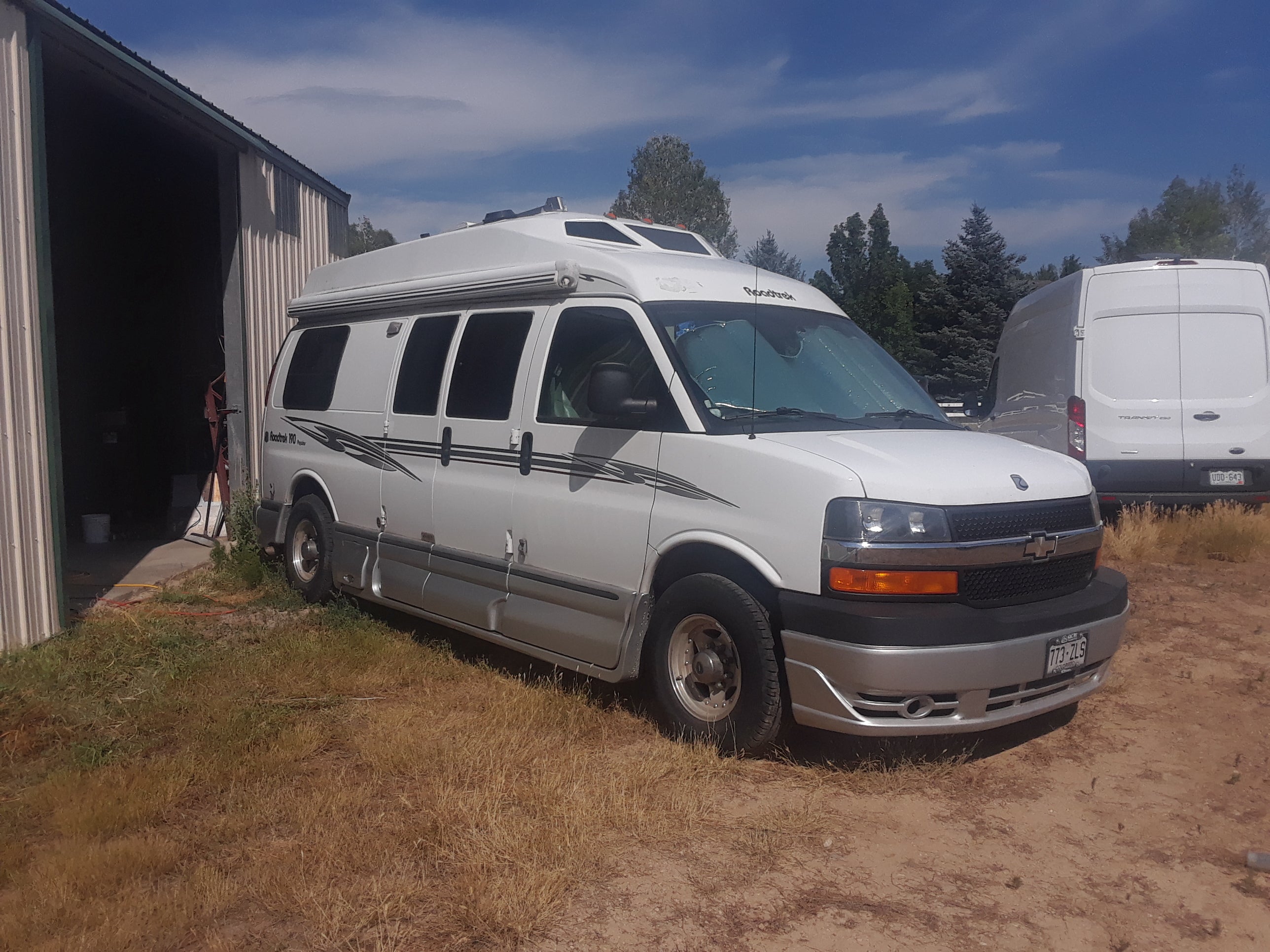
AC on my friendís Roadtrek went out. It had a large plastic rain shield/air diverter that kept the exhaust and intake air for the condenser from mixing. There was no room to work and I was afraid to cut up the shield to remove it. I told her to have the experts at the RV repair place to do the AC replacement.
She did that and with the first storm, rain soaked the interior. I could see looking through these louvers that they had torn up the plastic water/air shield and didnít replace it. I told her I didnít trust them to fabricate a new shield and Iíd take care of it now that I knew they were bozos.
PITA getting the
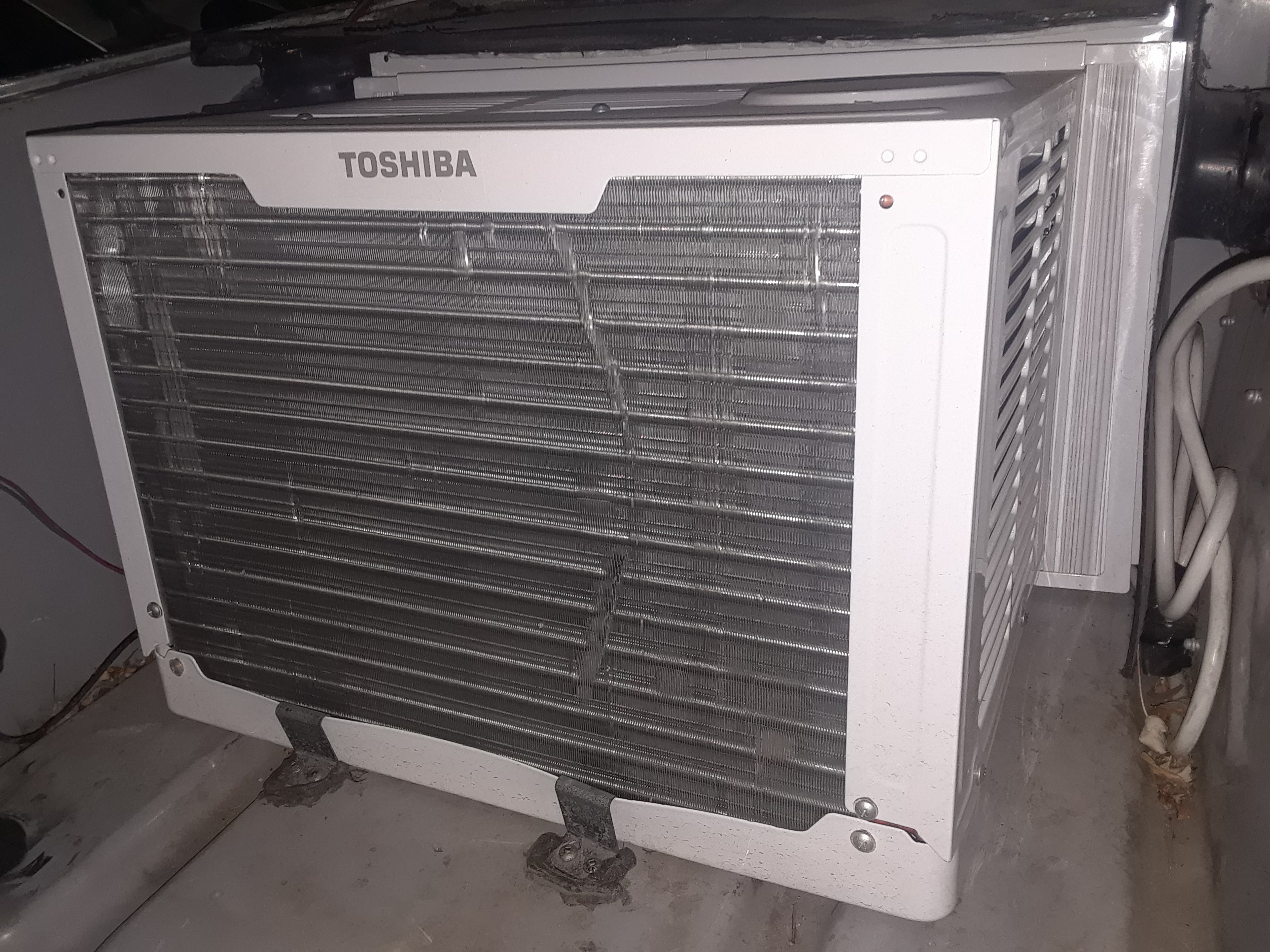
outside cover off - they cross-threaded a screw and overtightened one. Had to use a hand impact driver.
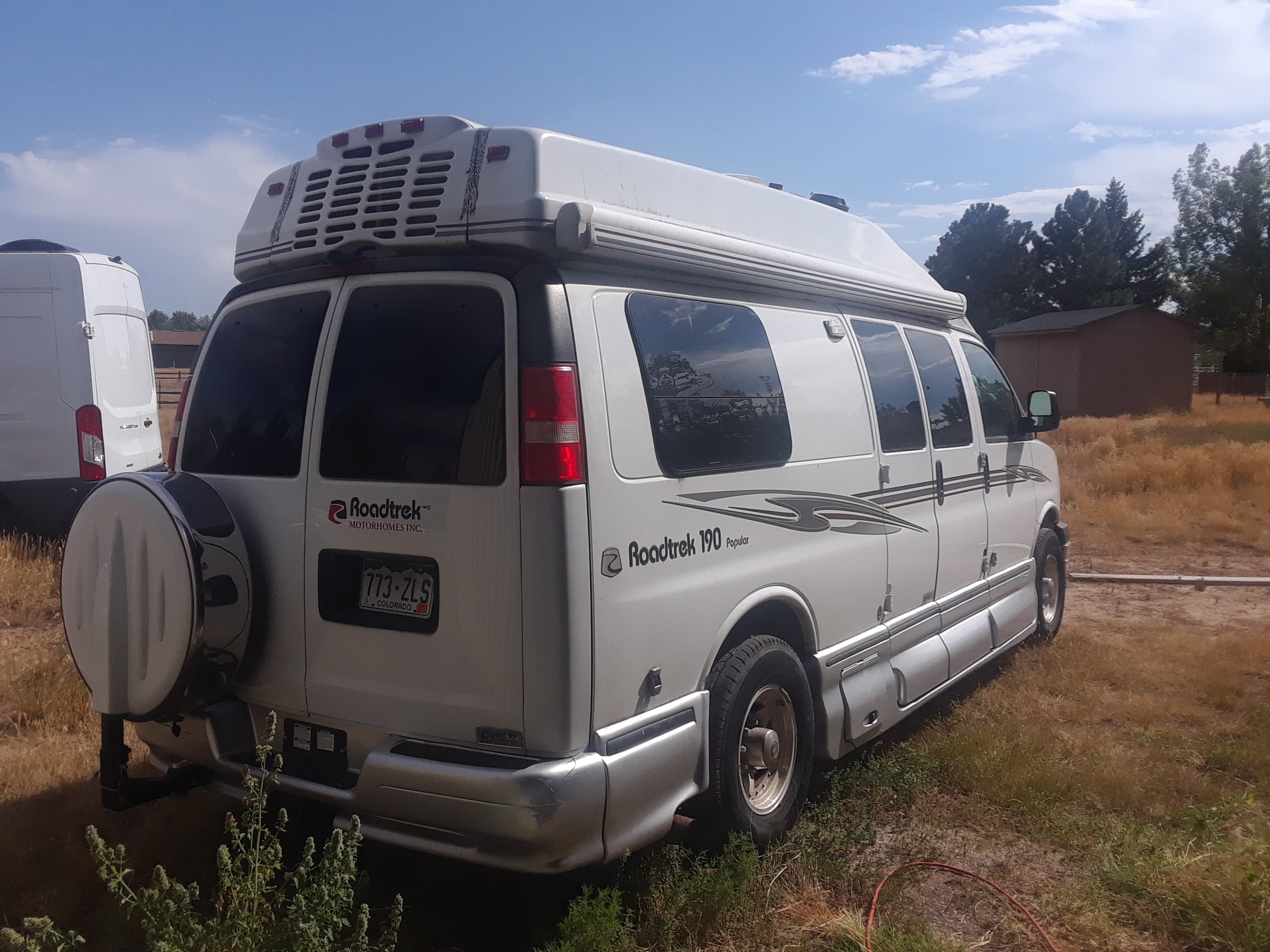
Theyíd replaced the Dometic RV AC with a household Toshiba! You can see the accordion flaps here. Condenser intake and exhaust air mixes together along with intake air for the evaporator. And they pre-mangled the condenser fins.

And then inside:
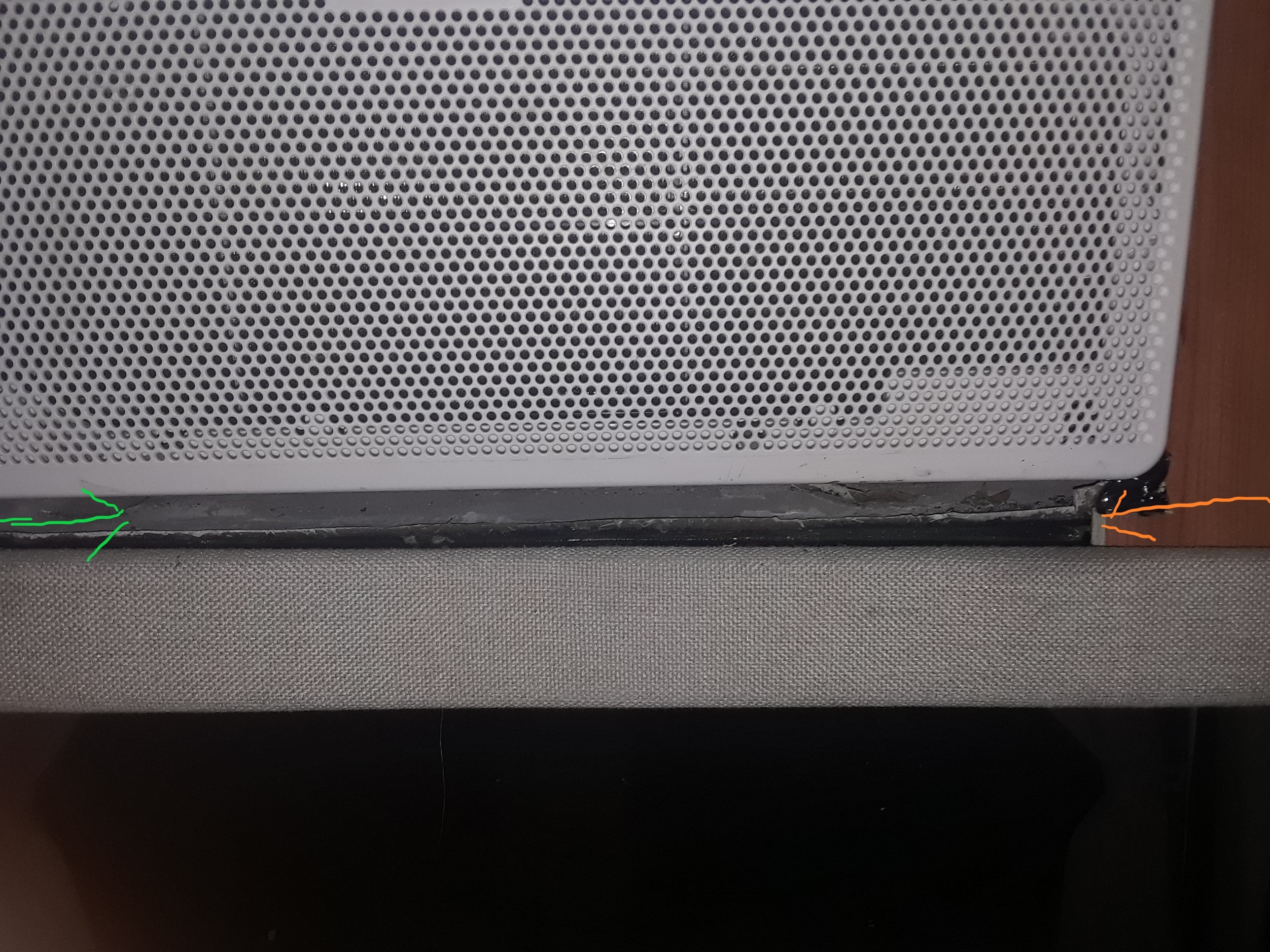
Orange arrow on the right is the metal roof of the RV. Green arrow on the left is a 3/4" gap between the AC unit and the metal roof. This is completely open to the outside!!! Just above the orange arrow, you can see black sealant - so they sealed the sides but not the bottom. argh.
Yet another example of not letting ďprofessionalsĒ fix your stuff. I couldíve screwed this up much better than they did.
I suspect Iím going to have to redo the entire install.
Question: But how would Oppo seal that bottom gap? 3/4" is really too much gap for any kind of sealant to cross.
 Dead_Elvis, Inc.
> VincentMalamute-Kim
Dead_Elvis, Inc.
> VincentMalamute-Kim
08/03/2020 at 01:03 |
|
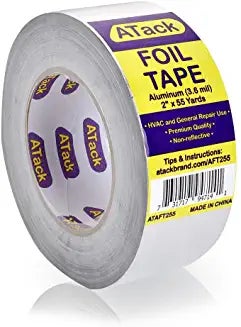
 jminer
> VincentMalamute-Kim
jminer
> VincentMalamute-Kim
08/03/2020 at 01:12 |
|
Foam plus a fat bead of silicone.
That unit is also loud as hell, had one on my office but returned it as it was loud.
 Rusty Vandura - www.tinyurl.com/keepoppo
> VincentMalamute-Kim
Rusty Vandura - www.tinyurl.com/keepoppo
> VincentMalamute-Kim
08/03/2020 at 01:14 |
|
In my experience, anybody who claims to be an RV mechanic is probably named Clem and pick a few other stereotypes...
The foil tape is a good suggestion also, you might consider aluminum flashing and foil tape. You can buy the flashing and a roll at Home Depot and then cut a strip to fit. Also there are a couple of different kinds of RV specific sealant that donít behave like ordinary caulk. Itís sort of flows and smooths out differently. Itís hard to explain, but it works better on RVs.
I had a supposed RV shop install a vent fan in my tent trailer and what a big mistake that was. They totally butchered it, it leaked the first time it rained, and Iíve been playing catch up ever since.
 notsomethingstructural
> VincentMalamute-Kim
notsomethingstructural
> VincentMalamute-Kim
08/03/2020 at 01:51 |
|
You could either get a foam backer rod and use the sealant against the backer rod (same way they make expansion joints in masonry) or use expanding foam in a can (same way they do window frames). You can also trim back and overlay the foam with something afterwards like Jb weld. Both would be acceptable. I would just spray foam it since the access is pretty minimal - the JB weld is overkill here unless thereís signs of corrosion or active leaks after the foam is in . Get a closed cell foam as it will be more water resilient. I think loctite makes a closed cell foam thatís guaranteed† not to leak for 5 years.†
 sony1492
> VincentMalamute-Kim
sony1492
> VincentMalamute-Kim
08/03/2020 at 02:10 |
|
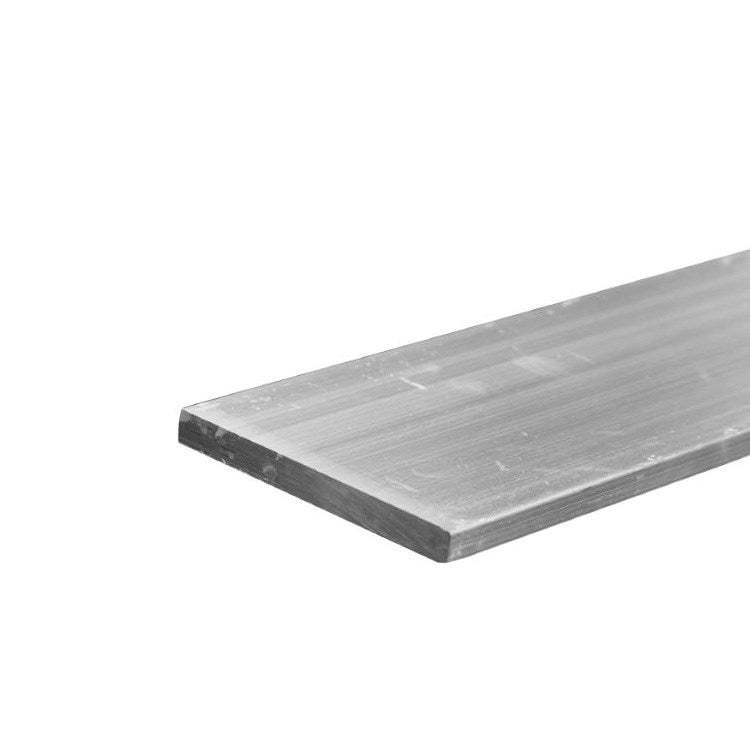
Flat aluminum bar from the hardware store and self tapping screws
 Dogsatemypants
> VincentMalamute-Kim
Dogsatemypants
> VincentMalamute-Kim
08/03/2020 at 09:17 |
|
Foil tape with durabon d strips or mat to insulate and protect from tearing.
 This is what we'll show whenever you publish anything on Kinja:
> notsomethingstructural
This is what we'll show whenever you publish anything on Kinja:
> notsomethingstructural
08/03/2020 at 10:36 |
|
I just came here to say ď Rod and Caulk"
 notsomethingstructural
> This is what we'll show whenever you publish anything on Kinja:
notsomethingstructural
> This is what we'll show whenever you publish anything on Kinja:
08/03/2020 at 10:49 |
|
heh rod. heh caulk.
 VincentMalamute-Kim
> notsomethingstructural
VincentMalamute-Kim
> notsomethingstructural
08/03/2020 at 21:02 |
|
Thanks. After thinking about it all day - Iím probably going to remove the AC to see how they sealed the sides. It looks good from the inside but thatís the unit sealed to the finished interior trim. I canít see how they sealed the sides of the unit against the exterior fiberglas cap. If they even did. Given the workmanship, Iím having doubts.
Thanks to everyoneís ideas, if I do reinstall the unit, Iíll have access to install a PVC ledger along that bottom and have a small gap that I can caulk.
 VincentMalamute-Kim
> Rusty Vandura - www.tinyurl.com/keepoppo
VincentMalamute-Kim
> Rusty Vandura - www.tinyurl.com/keepoppo
08/03/2020 at 21:05 |
|
My one experience with RV mechanics confirms your stereotype. I bet youíre thinking of Dicor RV sealant. Self lapping. Also comes in non-self lapping. I used it during the vent
fan install on my Transit. I did a fine job if I do say so myself! Compared to your RV shop. Difficulty in finding good people is s
o irritating.
After t hinking about it all day - Iím probably going to remove the AC to see how they sealed the sides. It looks good from the inside but thatís the unit sealed to the finished interior trim. I canít see how they sealed the sides of the unit against the exterior fiberglas cap. If they even did. Given the workmanship, Iím having doubts.
Thanks to everyoneís ideas, if I do reinstall the unit, Iíll have access to install a PVC ledger along that bottom and have a small gap that I can caulk.
 VincentMalamute-Kim
> sony1492
VincentMalamute-Kim
> sony1492
08/03/2020 at 21:07 |
|
After thinking about it all day - Iím probably going to remove the AC to see how they sealed the sides. It looks good from the inside but thatís the unit sealed to the finished interior trim. I canít see how they sealed the sides of the unit against the exterior fiberglas cap. If they even did. Given the workmanship, Iím having doubts.
Good idea. I f I do reinstall the unit, Iíll have access to install a variant of your idea using PVC ledger board along that bottom and have a small gap that I can caulk.
 VincentMalamute-Kim
> jminer
VincentMalamute-Kim
> jminer
08/03/2020 at 21:09 |
|
L
uckily itís not my RV. If I donít mention that to her, sheíll never notice the sound level of that AC unit.
After thinking about it all day - Iím probably going to remove the AC to see how they sealed the sides. It looks good from the inside but thatís the unit sealed to the finished interior trim. I canít see how they sealed the sides of the unit against the exterior fiberglas cap. If they even did. Given the workmanship, Iím having doubts.
If I do reinstall the unit, Iíll have access to install a using PVC ledger board along that bottom and have only a small gap that I can caulk.
If I donít reinstall the entire thing, Iíll probably do
the foam/caulk.
 VincentMalamute-Kim
> Dogsatemypants
VincentMalamute-Kim
> Dogsatemypants
08/03/2020 at 21:10 |
|
Durabond?† Google only shows drywall tape?† I do have super sticky RV coal tar looking tape, forget what itís called.† I bet thatís what youíre referring to.
 VincentMalamute-Kim
> Dead_Elvis, Inc.
VincentMalamute-Kim
> Dead_Elvis, Inc.
08/03/2020 at 21:11 |
|
Thanks for the idea. Ií
m thinking most adhesives on
tapes wonít last long enough.† I donít know about foil tapes though.
After thinking about it all day - Iím probably going to remove the AC to see how they sealed the sides. It looks good from the inside but thatís the unit sealed to the finished interior trim. I canít see how they sealed the sides of the unit against the exterior fiberglas cap. If they even did. Given the workmanship, Iím having doubts.
If I do reinstall the unit, Iíll have access to install a using PVC ledger board along that bottom and have only a small gap that I can caulk.
If I donít reinstall the entire thing, Iíll probably do the foam/caulk.
 Rusty Vandura - www.tinyurl.com/keepoppo
> VincentMalamute-Kim
Rusty Vandura - www.tinyurl.com/keepoppo
> VincentMalamute-Kim
08/03/2020 at 21:16 |
|
Dicor: yup.
Iíd probably strip all of the household plastic window a cc ordio n flap garbage and make my own flashing. Also, did the Dometic unit vent and flow air the same way as this window unit does? Iíd be taking a hard look at airflow and what I could do to make it more copacetic.
 Dead_Elvis, Inc.
> VincentMalamute-Kim
Dead_Elvis, Inc.
> VincentMalamute-Kim
08/03/2020 at 21:33 |
|
I donít know if Iíve used that particular brand, but Iíve used this type of tape to temporarily repair a cracked air filter housing. Ul timately never bothered to repair it properly, since the adhesive seemed to be perfectly tolerant of underhood temps after a couple weeks . A year later, it still hadnít peeled, bubbled, or shifted at all. It was a much more aggressive adhesive than what you find on duct tape, more like Gorilla tape.
Youíve only got one chance to put it place, though - itís not coming off in one piece for repositioning, IME. If you can bridge the gap with it, it should stay in place as long as you need. ( But if youíre going to go to the effort of pulling the unit out, Iíd probably take your approach.)
 notsomethingstructural
> VincentMalamute-Kim
notsomethingstructural
> VincentMalamute-Kim
08/03/2020 at 21:46 |
|
In my humble opinion, when I encounter questionable workmanship especially on water issues, trying to fix a small issue frequently turns into fixing a big issue. For example, if you canít properly flash around the opening because all the other waterproofing wasnít installed correctly. Sometimes itís better to improve something thatís working than it is trying to do the work correctly and breaking it. Plus† Thereís times people tried to do it right and it just wouldnít work.
 VincentMalamute-Kim
> Rusty Vandura - www.tinyurl.com/keepoppo
VincentMalamute-Kim
> Rusty Vandura - www.tinyurl.com/keepoppo
08/03/2020 at 21:57 |
|
I canít remember how the Dometic air flow was. It doesnít matter now since the unit is different and they tossed all previous air management shielding.
I think what I come up with will be similar to what was there before.
And another
good reason to reinstall the unit - get rid of the accordion flaps and see what they did
behind them.
 VincentMalamute-Kim
> notsomethingstructural
VincentMalamute-Kim
> notsomethingstructural
08/03/2020 at 21:59 |
|
True on all your points. Iím thinking (hoping?
) that if I do redo it myself, Iíll do the entire job correctly.† That is what usually happens on my projects.† Not always.† But usually.
 VincentMalamute-Kim
> Dead_Elvis, Inc.
VincentMalamute-Kim
> Dead_Elvis, Inc.
08/03/2020 at 22:01 |
|
Thatís nice to hear about the foil tape. I do have some hacked together
water shields in my Transitís engine bay that could be better
sealed with the foil tape then
.
yeah, Iím leaning to pulling the AC
unit and redoing everything given their workmanship. Stay tuned.
 Rusty Vandura - www.tinyurl.com/keepoppo
> VincentMalamute-Kim
Rusty Vandura - www.tinyurl.com/keepoppo
> VincentMalamute-Kim
08/03/2020 at 22:11 |
|
†Was that work done recently? Maybe you should go in and tear somebody a new rectum. Or surgically install one with a reciprocating saw.
 VincentMalamute-Kim
> Rusty Vandura - www.tinyurl.com/keepoppo
VincentMalamute-Kim
> Rusty Vandura - www.tinyurl.com/keepoppo
08/03/2020 at 22:18 |
|
It was done l
ast summer. Itíd be a leap for me to make a scene -
Iím too non-confrontational.†
 Rusty Vandura - www.tinyurl.com/keepoppo
> VincentMalamute-Kim
Rusty Vandura - www.tinyurl.com/keepoppo
> VincentMalamute-Kim
08/03/2020 at 22:47 |
|
†No, you never struck me as a scene kind of guy
 Dogsatemypants
> VincentMalamute-Kim
Dogsatemypants
> VincentMalamute-Kim
08/04/2020 at 14:54 |
|
Meant eternabond. Got the names mixed up
 VincentMalamute-Kim
> Dogsatemypants
VincentMalamute-Kim
> Dogsatemypants
08/04/2020 at 15:16 |
|
ah.† I actually have some but didnít think to use it.